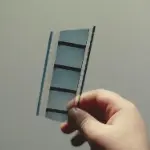It’s the middle of the night. I’m thirteen and riding the high of successfully watching Saw (2004). There’s no school tomorrow, and I’m looking for tonight’s movie. At this point, my parents have stopped holding me to the age ratings and began trusting my own discretion, hence Saw. I hadn’t seen anything like it before, it was gritty, a little experimental, very rough and entirely unpolished; it caught my attention.
Though Saw 2 would’ve been the most likely follow up, I clicked on 28 Days Later (2002). Cool poster, zombies, and Cillian Murphy (I remembered him from Batman Begins (2005)). All good signs, but what caught me was a screenshot from the film. It was a grainy, fuzzy image of a man hunched over and crying out, and behind him was this rusted system of pipes and metal (I would later find out this was the bottom of a London Bus). Seemed perfect, and I clicked play.

The British film, 28 Days Later, released in 2002, and made roughly $84 million dollars with a budget of $8 million. Though the director, Danny Boyle, tries not to have the film described as a zombie movie, it’s credited with revitalizing the zombie genre. In this film, the zombies as infected by the highly contagious “Rage Virus”, its symptoms being rabid violence, red eyes, and unlike your average zombie, speedy. The writer, Alex Garland, cites his inspiration for 28 Days Later originating from George A. Romeros “The Living Dead” zombie trilogy (all zombie media comes back to these films eventually), and thought a modern twist was the answer to bringing the fear back into movies about the undead. Boyle, the director, had gained attention for his novel- to- film adaptation Trainspotting (1996), and had previously adapted Garland’s novel with The Beach (2000), figured the original script for 28 Days Later was worth the risk. Boyle had previously flipped small budgets into box office success (Trainspotting's $4 million dollar budget translating to $70 million at the box office). So, Boyle was given $8 million dollars, a kiss on the cheek, and sent off to create a zombie apocalypse on the streets of the highest population density city in the UK, London.

I come back to 28 Days Later often, because I can still remember how it felt to experience it for the first time. Thirteen- year- old me couldn’t look away from the screen, the final action sequence (accompanied by John Murphy’s “In a house, in a heartbeat”) was tense, shocking, and gritty as Jim (Cillian Murphy) lets go of his reservations and faces the apocalypse head on.

I was in awe of the subtle, natural performances, the rough camera quality, and the British people; These elements weren’t aesthetically appealing or fine tuned, rather they were raw and organic in a way that couldn’t have ever been achieved with just a big budget.
Over the years, I’ve heard more and more stories of how 28 Days Later managed its lower-than-desired budget. These stories sound like they should belong to a $5 indie short film and not an $8 million dollar studio backed film. Hearing the limitations and sacrifices made to the technical, logistical, and narrative aspects of production are inspiring, because the final product was still able to glue thirteen- year- old me to the couch and give him a whole new way of seeing film. Now that I’ve begun to have experiences on set, I feel more and more connected to this film’s struggles and achievements everyday.

One example of this is the choice of camera. 28 Days Later’s reputation is partly connected to the MiniDV camera (potato) that it used for filming. There are multiple Reddit posts on r/movies and r/horror where people ask and try to determine why it looks so grainy and low res (my personal favourite being named “28 Days Later is unwatchable on a modern TV”). The practical reason explains that a standard camera setup would be costly, take up too much space, and too much time would be spent on building the camera and the frame. The MiniDV is designed to be a home video camera, and solved all the financial worries in a flash.

Boyle had made peace with the fact he wouldn’t be using an Arri (although once the studio gave him more money, he was able to film the ending with one) but he and Cinematographer Anthony Dod Mantle were still able to highlight the unique qualities of this camera. This included an inconsistent stutter speed, meaning the frame rate would drop at random whenever there was any quick movement. In the film, you can witness how Boyle try and trigger the frame rate to drop. In his words, he thought it made the film look “demonic” and was a perfect fit for a zombie film. This can be tangibly felt as the viewer when zombies choppily sprint across London, the low- res image obscuring details as the audience is only catching parts of their movement. It’s effective. 28 Days Later was also one of the first films to ever extensively shoot on a digital camera, which also contributed to the lack of faith the studios had in the project. New zombies and a new visual look seemed like a bad investment.

The locations department had fun. Pat Karam, the location manager has shared stories, along with everyone else as to how they were trying to film in a London which hadn’t yet established any procedures for filming in the city. The solution was to film in the early weekend mornings. They were supervised by police while cars honked at Cillian Murphy and drunken pub crawlers wandered around set. The police had the authority to shut down filming at any point, and though this didn’t happen, they often had to pause filming to let traffic use the street they were using.

Somehow, the crew secured a London bus and wanted to lay it on its side, on the street. They were told they couldn’t. It was a busy part of London and they couldn’t obstruct this high traffic area for long. Their solution was the most ingenious and indie solution imaginable. They just did it anyways. Though I’m sure Pat Karam was having a heart attack, this production successfully created a zombie apocalypse in London without actually having the budget to block off any parts of the city.
Though this effect may be lost on a modern audience, Boyle wanted to cast unknown actors. He saw the combination of the DV camera and actors who hadn’t been introduced yet to Hollywood, as a way to make the zombie apocalypse feel more authentic.

This artistic choice clashed with the studio, as celebrity actors would’ve brought in a whole new wave of audiences and money. Brendan Gleeson was the only actor who was well known. 28 Days Later was a chance for newer talent to prove themselves in the mainstream, it gave them a shot and both Cillian Murphy and Naomie Harris have fully taken advantage of it. I appreciate the sentiment that the film industry is stronger while it's taking risks with new talent and bringing new people into film.
Thirteen- year- old me made a terrible mistake. After finishing 28 Days Later, he watched 28 Weeks Later (2007). For the first one to highlight new actors, fight for each of its shots, find ingenious ways to film a vision on a budget, and also bring the zombie genre into the 21st century, the sequel was a bigger budget, star powered American remake. Technically and narratively, it wasn’t bad but the grit and roughness had been washed over, and the magic had all but disappeared. Instead of getting the horror sequel I was anxiously anticipating, I saw how what I loved so much in film could be so easily scrubbed out. After this I found myself watching low- budget, experimental films as I continued my ritual of watching movies late at night. 28 Days Later gave me an entirely new look at film, and as I’ve learned more about it, an appreciation for how passion and effort can elevate film in a way money alone can’t.

Here's hoping that when 28 Years Later (2025) releases in June, it remembers what made the first one so memorable.




















































View replies 1
View replies 1
View replies 1
View replies 1
View replies 0
View replies 0
View replies 0
View replies 0